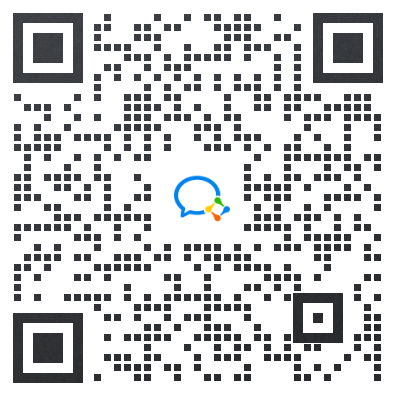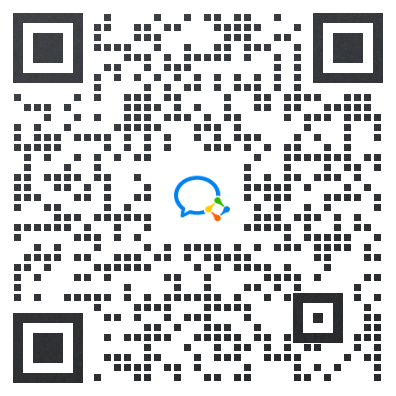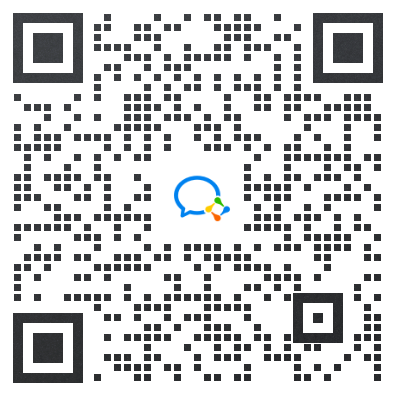为了方便同学们的学习,新东方在线新概念英语网为大家整理了新概念英语第一册must的用法,新概念英语作为一套世界闻名的英语教程,以其全新的教学理念,有趣的课文内容和全面的技能训练,深受广大英语学习者的欢迎和喜爱。希望以下内容能够为大家的新概念英语学习提供帮助!
一、《新概念英语》中的must
在《新概念英语》经典版中,must出现的频率较高,分别出现在第一册第43-46课、第61-66课、第77-80课、第125-132课以及第二册第17课、第41课、第65课、第89课。
must比较常见的用法是:表义务或要求等的“必须”;表猜测的“肯定,一定”。
二、表义务或要求等
这时,must表示“必须”。如:
肯定句:He must have some water after the heavy work.
否定句:He needn't have any water after the heavy work.
一般疑问句及其回答:Must he have any water after the heavy work? Yes, he must. / No, he needn't.
划线部分提问:What must he do after the heavy work?(假如划线部分为have some water的话)
【注意】
(一)mustn't与needn't
很多学生一说到must的否定,首先想到的一般都是mustn't。所以,老师需要提醒学生注意:must表必须时的否定形式是needn't(不必),而不是mustn't(禁止,不能)。
(二)must与have to
虽然have to(不得不,必须)经常被归到情态动词里,但其实have to并不是情态动词,这里的have其实是实义动词,从句子功能来讲,就跟work或play等动词的基本用法是一样的。它与must的区别主要有:
1、must没有时态、人称和数的变化,而have to有时态、人称和数的变化。如:
must:She must go home right away.
have to:She has to go home right away.
再比如:
must:She must attend the meeting yesterday.
have to:She had to attend the meeting yesterday.
2、因为must没有时态的变化,而have to有,所以在句型转换中,要注意两者的区别。如:
1)must
肯定句:She must attend the meeting yesterday.
否定句:She needn't attend the meeting yesterday.
一般疑问句及其回答:Must she attend the meeting yesterday? Yes, she must. / No, she needn't.
划线部分提问:What must she do yesterday? (假如划线部分为attend the meeting的话)
2)have to
肯定句:She had to attend the meeting yesterday.
否定句:She didn't have to attend the meeting yesterday.
一般疑问句及其回答:Did she have to attend the meeting yesterday? Yes, she did. / No, she didn't.
划线部分提问:What did she have to do yesterday? (假如划线部分为attend the meeting的话)
3、must多表示主观需要或责任感的驱使,认为有必要或有义务去做某事,一般译为“必须”,而have to多表示客观存在的环境所限,即客观要求而无奈为之,一般译为“不得不做某事”。如:
主观认为、无人强迫:I must clean the kitchen because it is too dirty. (因为太脏了,我必须要打扫房间。)
客观所逼、不得不做:I have to do my homework now.(我现在不得不做作业。)
4、尽管have to与must存在以上区别,在must的否定句以及一般疑问句的否定回答中,也经常可以用have to来替换needn't。如:
肯定句:She must attend the meeting yesterday.
否定句:She needn't/doesn't have to attend the meeting yesterday.
一般疑问句及其回答:Must she attend the meeting yesterday? Yes, she must. / No, she needn't/doesn't have to.
三、表猜测
我们在“情态动词can的考点用法”一文中,已经提到,can't表达的是否定猜测,而must则表示肯定猜测,意思是某人或某物一定或肯定会怎么样。
与can't一样,must主要用来表示对现在时间或是过去时间发生的事情的肯定猜测。
(一)对现在时间的猜测
此时,must可以用来表示对现在的状态或动作进行猜测。如果是状态,must后面直接跟表状态的谓语动词即可;如果是动作,must后面的谓语动词则要采用be doing的形式。如:
状态:He must be over 40 years old. (他肯定有四十多岁了。)
动作:He must be reading in the library now. (他现在肯定正在图书馆看书。)
(二)对过去时间的猜测
此时,must后面的谓语动词如果是状态,则采用“must have+表状态的动词的过去分词”;如果是动作,则采用“must have done”的形式;如果是过去进行的动作,则采用“must have been doing”的形式。如:
状态:He must have been in the bathroom when I called him last night.
动作:He must have finished his homework before dinner yesterday.
过去进行:He must have been listening to loud music, for he didn't answer my call.
四、特殊用法
(一)表偏偏
此时,must表达的是说话者不耐烦的语气或是与说话者愿望相反的情况。如:
Why must you come in at this moment? (你为什么偏偏在这个时候进来?)
(二)用作名词
must也可以直接用作普通名词,表示“必须做的事,必需的东西”。如:
A raincoat is a must in the rainy season. (在雨季雨衣是必备之物。)
His new novel is a must for all lovers
新东方在线英语水平测试

 资料下载
资料下载
新概念一册课文详解+语法+练习答案
发布时间:2022-12-22添加新东方新概念助教
免费获取资料

新概念一册单词默写表PDF版
发布时间:2022-01-13添加新东方新概念助教
免费获取资料

新概念MP3音频(美音+英音)
发布时间:2022-01-13添加新东方新概念助教
免费获取资料

英语三字经-日记2000词
发布时间:2022-01-13添加新东方新概念助教
免费获取资料

新概念1知识点+课文讲解
发布时间:2022-01-13添加新东方新概念助教
免费获取资料

新概念英语语法(全)
发布时间:2022-01-13添加新东方新概念助教
免费获取资料

《走遍美国》MP3教材
发布时间:2022-01-13添加新东方新概念助教
免费获取资料

老友记1-10季视频资料
发布时间:2022-01-13添加新东方新概念助教
免费获取资料

新概念英文原版电子书
发布时间:2022-01-13添加新东方新概念助教
免费获取资料

《新概念第一册》全套学习笔记
发布时间:2020-08-20添加新东方新概念助教
免费获取资料

《新概念英语语法大全》
发布时间:2020-08-20添加新东方新概念助教
免费获取资料

《生活大爆炸》全12季资源汇总
发布时间:2020-08-20添加新东方新概念助教
免费获取资料

《走遍美国》音频教材大全
发布时间:2020-08-20添加新东方新概念助教
免费获取资料

初中重点短语和句型大全
发布时间:2020-08-20添加新东方新概念助教
免费获取资料
零基础学习英语礼包
发布时间:2020-08-20添加新东方新概念助教
免费获取资料

初学英语语法指导礼包
发布时间:2020-08-20添加新东方新概念助教
免费获取资料

世界英文名著大全资源
发布时间:2020-08-20添加新东方新概念助教
免费获取资料

13部曲BBC听力精品资源
发布时间:2020-08-20添加新东方新概念助教
免费获取资料


关注四六级小助手服务号回复【典藏笔记】获取
关注新东方四级服务号,
获取学习资料

 推荐阅读
推荐阅读
复合不定代词包括 somebody、something、someone、anybody、anything、 anyone、nobody、nothing、no one、everybody、everything、everyone 等。它们在句 中可用作主语、宾语或表语,但不能用作定语。
来源 : 网络 2024-05-21 12:53:00 关键字 : 剑桥KET语法,复合不定代词
不定代词是不指明代替任何特定名词或形容词的代词。
来源 : 网络 2024-05-21 11:30:15 关键字 : 剑桥KET语法,不定代词
this、these指在时间或空间上离说话人较近的人或物; that、those 指在时间或空间上离说话人较远的人或物; this、that指代的是单数名词或不可数名词; these、those指代的是复数名词。
来源 : 网络 2024-05-21 11:15:09 关键字 : 剑桥KET语法,指示代词
名词的所有格主要用来表示名词与名词之间的所属关系,中文可以翻译为…… 的。& 39;s所有格主要表示有生命的事物的所有格。 1、不
物主代词是表示所有关系的代词,有形容词性物主代词和名词性物主代词两种。具体如下表所示:
来源 : 网络 2024-05-21 11:02:45 关键字 : 剑桥KET语法,物主代词
人称代词是为了避免重复,用来代替前面提到的人、动物或者事物的词,如: This is my book I bought it last week 这是我的书,我上周买的。 (注:代词 it代替前 面的 book)
来源 : 网络 2024-05-21 10:58:08 关键字 : 剑桥KET语法,人称代词
英语中很多名词前不加冠词,这种情况称为零冠词。零冠词可以用在复数可数名词、不可数名词及专有名词之前。
来源 : 网络 2024-05-21 10:53:26 关键字 : 剑桥KET语法,零冠词用法总结
定冠词the与指示代词this和 that同源,有“那(这)个”的意思,特指某些人或物, 以便与其他人或物区分开来,但其指示性较弱。定冠词与名词连用时, 一般放在名词之前。
来源 : 网络 2024-05-21 10:50:01 关键字 : 剑桥KET语法,the的用法
不定冠词 a 和 an 一般只用于可数名词单数,表示泛指,即不专指某一具体的、 特定的个体事物,而只表示某个笼统的概念。a 放在以辅音发音开头的名词前,an 放 在以元音发音开头的名词前。
来源 : 网络 2024-05-21 10:41:23 关键字 : 剑桥KET语法,a和an的用法
复合名词在英语中很常见,它由名词、动词、副词、形容词及介词组合而成, 一 般包含两个部分。 复合名词的构成 常见的复合名词
来源 : 网络 2024-05-21 10:23:20 关键字 : 剑桥KET语法,复合名词


 资料下载
资料下载
添加新东方新概念助教
免费获取资料

添加新东方新概念助教
免费获取资料

添加新东方新概念助教
免费获取资料

添加新东方新概念助教
免费获取资料

添加新东方新概念助教
免费获取资料

添加新东方新概念助教
免费获取资料

添加新东方新概念助教
免费获取资料

添加新东方新概念助教
免费获取资料

添加新东方新概念助教
免费获取资料

添加新东方新概念助教
免费获取资料

添加新东方新概念助教
免费获取资料

添加新东方新概念助教
免费获取资料

添加新东方新概念助教
免费获取资料

添加新东方新概念助教
免费获取资料
添加新东方新概念助教
免费获取资料

添加新东方新概念助教
免费获取资料

添加新东方新概念助教
免费获取资料

添加新东方新概念助教
免费获取资料


 阅读排行榜
阅读排行榜
 相关内容
相关内容

